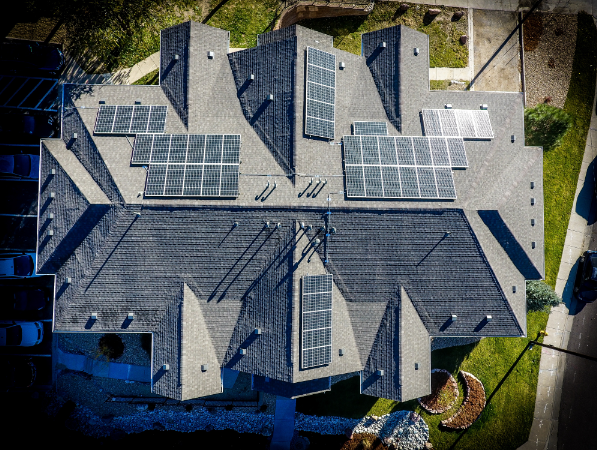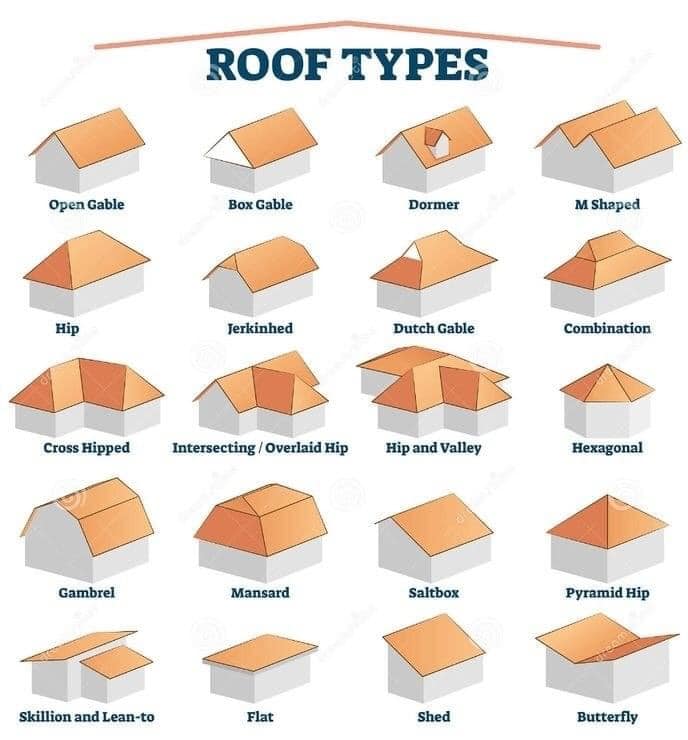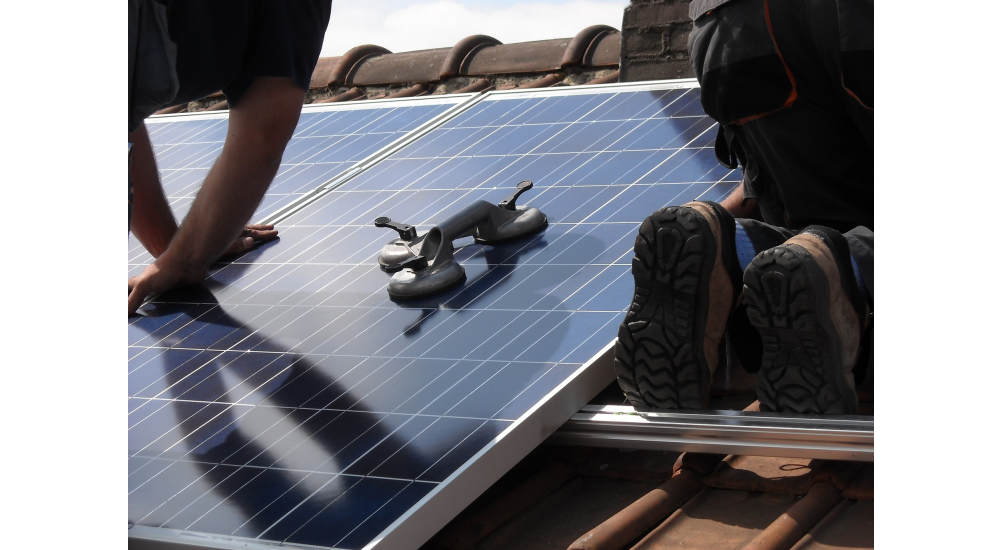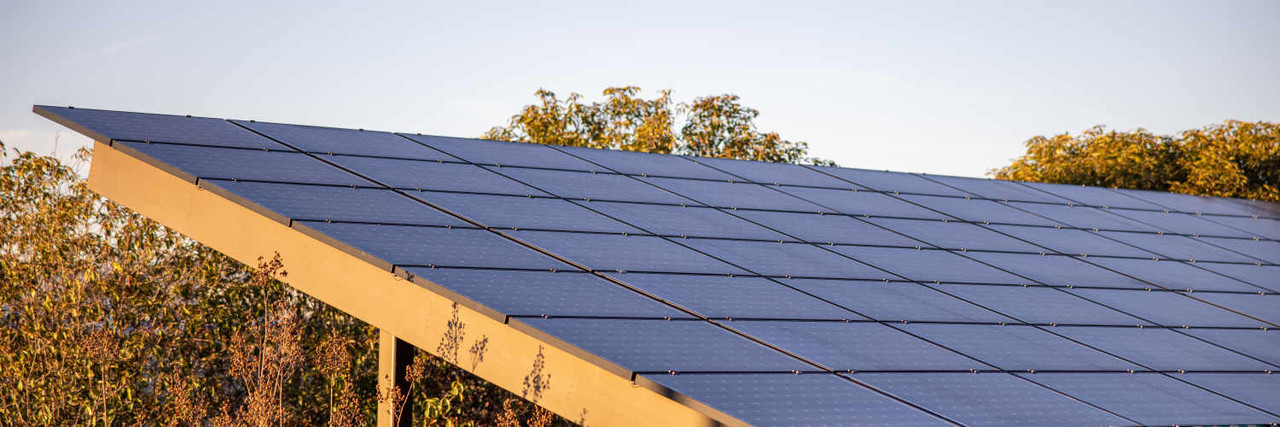Everything You Need to Know About Solar Panel Roofs
Are you thinking about installing solar panels on your roof? If the answer is yes, then this article is for you. We will discuss the basics of solar panel roofs, introduce the meaning of solar shingles and the cost of installing solar roofs.
What is a Solar Panel Roof?
When we talk about solar panel roofs, we usually picture traditional solar panels mounted on the roof, capturing sunlight through photovoltaic cells and converting it into electricity. However, there's also another option: solar roof tiles also called solar shingles. These are small solar panels that can be integrated directly into the roof, creating a more discreet and aesthetically pleasing solar system.

What Are Solar Shingles?
Also known as solar roofs, solar tiles, or solar roof tiles, solar shingles are tile-shaped panels permanently installed on your home’s roof. They have the appearance of traditional roof tiles, just like traditional solar panels, solar shingles are equipped with photovoltaic (PV) cells that capture sunlight and convert it into electricity. These shingles are connected in series, forming a network that feeds solar energy into the home’s electrical system. They can fit seamlessly on the roof, without affecting the aesthetics of the house, and can also reduce the family's dependence on the power grid and save energy. They provide a dual function—protecting the home from weather elements while generating clean, renewable energy.
Solar Panels vs. Solar tile Roofs: which is worth it?
The two types of solar panel roof function similarly but also have some differences, here we will discuss them.
Solar efficiency
Solar panels have better performance in terms of solar efficiency. Several reasons can explain this. Most solar shingles are made of copper indium gallium selenide, which is thin and flexible. But that also means they produce less electricity with an efficiency rate of 10% to 12% than traditional solar panel systems, which come with an average percentage of 15 to 20. In addition, solar panel systems can be installed on a place where is not shaded, but solar shingles cannot avoid that if your house is surrounded by some tall trees. Shading is an important factor to consider when you choose between the two solar panel roof types.
Size
With their relatively low efficiency, solar shingles have to cover a large area to produce the same amount of electricity as their counterpart. That is why if you choose solar shingles, you’d better make sure cover your whole roof is covered with solar shingles. On average, to cover a typical American house’s roof, it needs about 350 tiles.
Aesthetics
Solar shingles can easily blend into the existing style of your house. They are perfect for homeowners who really care about how their house looks.
Cost
Solar shingles are a more exorbitant choice to go with, averaging about 15,000 to 70,000 dollars. In contrast, a residential solar system cost is about $20,498 on average. Specific costs will depend on your energy needs, and many other factors.
Either type of solar panel roof can help you do your bit to reduce carbon emissions and protect the planet. But for most people, going with solar panel installations on their roof is still their top choice, considering their value and efficiency.
How Much is a Solar Shingles Roof?
Solar shingles cost between $20 and $25 per square foot, with labor costs ranging from $3 to $5 per square foot. For a typical American home with a roof area of about 2,000 square feet, the material cost would be $40,000 to $50,000, and installation would add another $6,000 to $10,000. Including additional components, the total cost typically falls between $50,000 and $70,000. Several factors influence the cost of solar shingles:
Location: Labor costs vary by state. For example, the average installation cost in California is around $70,000, whereas in Florida and Michigan, homeowners might pay about half that amount.
Roof Conditions: Complex roof designs with multiple angles increase installation costs. The larger and more complex the roof, the higher the installation cost for solar shingles.

Incentives and Rebates: Many states offer incentives and tax credits that can significantly reduce the cost of installing solar roofs, sometimes offsetting up to 26% of the total cost.
Although the initial cost of installing a solar shingles roof is high, it is a worthwhile investment in the long run. Houses with solar roofs generally have higher property values and the roofs come with a warranty of 20-25 years. Additionally, solar shingles can reduce energy costs by 40%-60%, leading to substantial savings on electricity bills.
How Many Solar Shingles Do I Need for My Roof?
On average, a single solar shingle can produce between 13 to 63 watts of power. Depending on the brand, model, and the amount of sun it receives, the amount of energy a tile produces varies. A typical American home may need about 160-170 solar tiles to meet its energy needs. Assuming each solar tile generates 50 watts of electricity under optimal conditions and receives 4.5 hours of peak sunlight, each tile can produce 225 watt-hours (0.225 kWh) per day.
Given that a typical American home consumes about 10,400 kWh per year, or approximately 867 kWh per month, the daily energy consumption is around 29 kWh. In an ideal scenario, such a home would require about 129 tiles (29 kWh / 0.225 kWh per tile).
However, this is an ideal calculation. Factors like shading, roof angle, and efficiency losses mean the actual electricity generated per tile per day is likely less than 225 watt-hours. Therefore, it's estimated that a typical home would need around 160-170 solar tiles to adequately meet its power needs. If you want to install solar panels on your roofs, you may need to know how many solar panels your home need.
How to Install Solar Roofs?
If you want to install a residential or commercial solar roof but don't know whether to choose a solar panel roof or a solar tile roof, then the following content is what you need.
Installing a solar panel roof
Installing solar panels on roofs can seem like a major project, but it is not as disruptive as you first think. The vast majority of the assembly occurs on the ground outside, and it only requires minimal work inside your home, placing a cable into the property to connect to the inverter and the rest of the system. Once your panels are constructed, the next step is to mark out where you will be installing them on your roof. To do this, carefully measure out and mark the tiles that you will need to remove in order to mount the brackets that will hold the panels.
You will then add rails to these brackets before installing the panels themselves. To attach the panels to the rails, you will need to use the specially designed clips that bolt onto the edges of the panel. This ensures you can quickly remove any for maintenance or repair as required. The wiring from each panel is then linked together to form a string, with the end cable then being fed into the roof. You will then be able to connect this to the inverter, which will convert the Direct Current that is generated into usable Alternating Current, which can then be used to power your home.

Installing a solar tile roof
Installing solar tiles roofs follow a process similar to installing solar panel roofs, but there are distinct differences:
Solar panels are mounted directly onto brackets or frames without altering the existing roof material, whereas solar tiles require fitting onto the roof and sealing. Wiring typically runs beneath the tiles through the roof structure, with the inverter positioned near the battery. In contrast, solar panels are connected in series using brackets, with the inverter and panels separated and often installed on a nearby wall.
Ready to start installing solar panels on roof?
Are you looking to discover the many benefits that come from installing solar panels on roof in your home? Here at Renogy, we are dedicated to helping change the way we use energy, and our entire team is committed to making a positive impact on the planet by removing the many barriers that prevent people from living sustainably. By 2030, we want to help empower over 50 million people with energy independence through our reliable and DIY-friendly renewable energy products.

Our solar panel roofs are made from the highest quality materials to ensure unrivaled monocrystalline cell efficiency, maximizing your energy production. We are incredibly proud of our industry-leading solar panels offer fantastic weather resistance and waterproofing, ensuring that they can continue to operate effectively for a long time.
Utilizing the latest technology, our Renogy framed solar panels offer fantastic efficiency and performance, coming with a 25-year warranty to give you complete peace of mind. While all solar panels lose efficiency over time, with our unique products, you will still be able to enjoy 95% performance after five years and 80% after 25 years.
There can be no denying the huge impact that we are having on the planet, and climate change is affecting our way of life. That is why we are pushing to reshape the future and make it easy and affordable to become energy independent. So if you are looking to live more sustainably and discover how solar panels can transform your home, check out the full range today or get in touch with our friendly team, who will be happy to help.
Conclusion
Installing a solar roof is a major project that requires consideration of cost, installation, and maintenance. But overall, using a solar roof does save energy, and as the government strengthens its tax credit policy for solar energy, it means that using a solar roof may be a trend.
FAQ
Will solar shingles increase the value of my home?
As with solar roof panels, solar shingles will also increase the value of your home. While the exact value depends on a variety of factors, including comparable homes in your area, home buyers typically appreciate the potential energy cost savings of a solar roof.
What is the life expectancy of a solar roof?
The industry standard for most solar panels' lifespans is 25 to 30 years. Most reputable manufacturers offer production warranties for 25 years or more.











